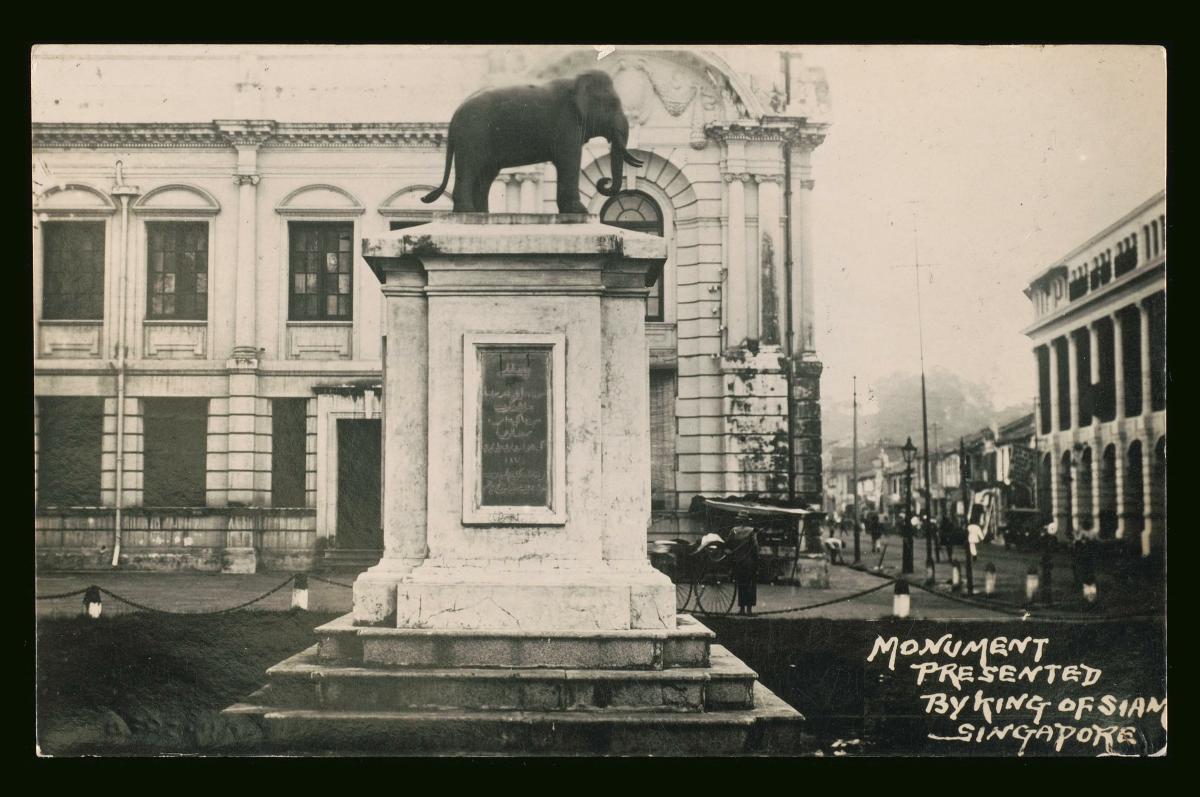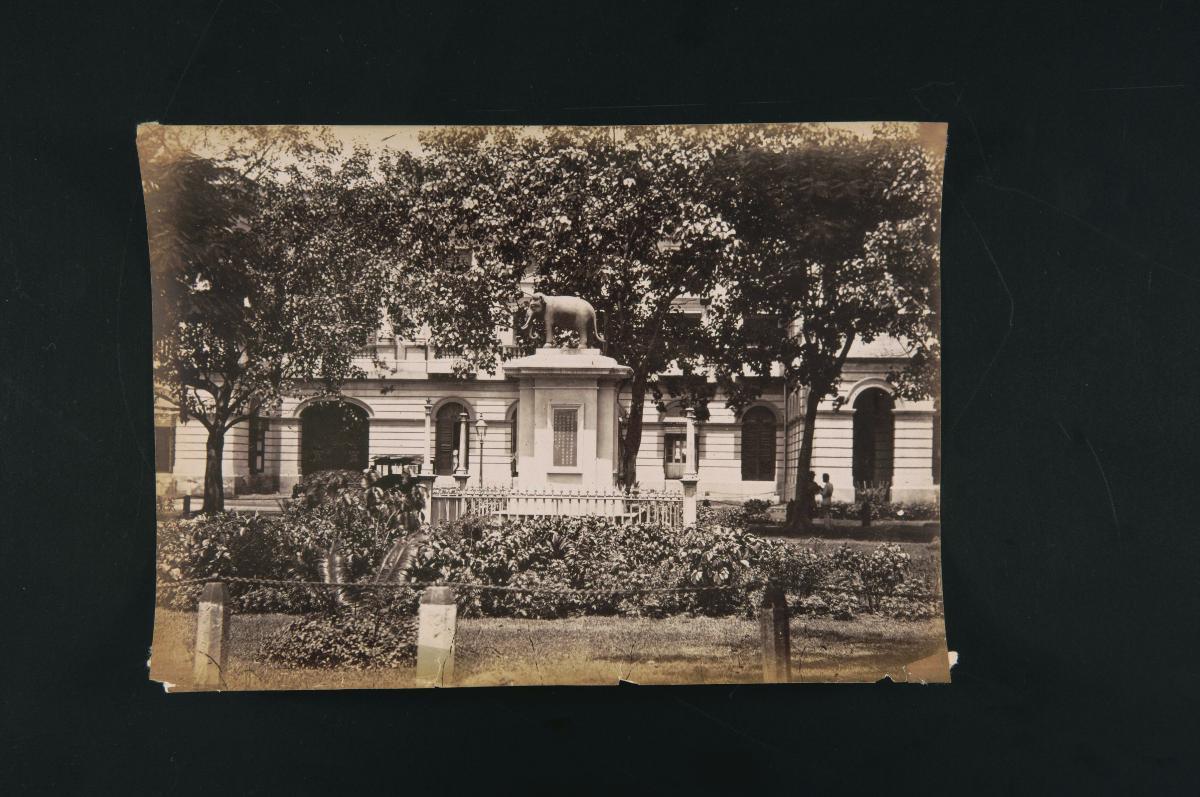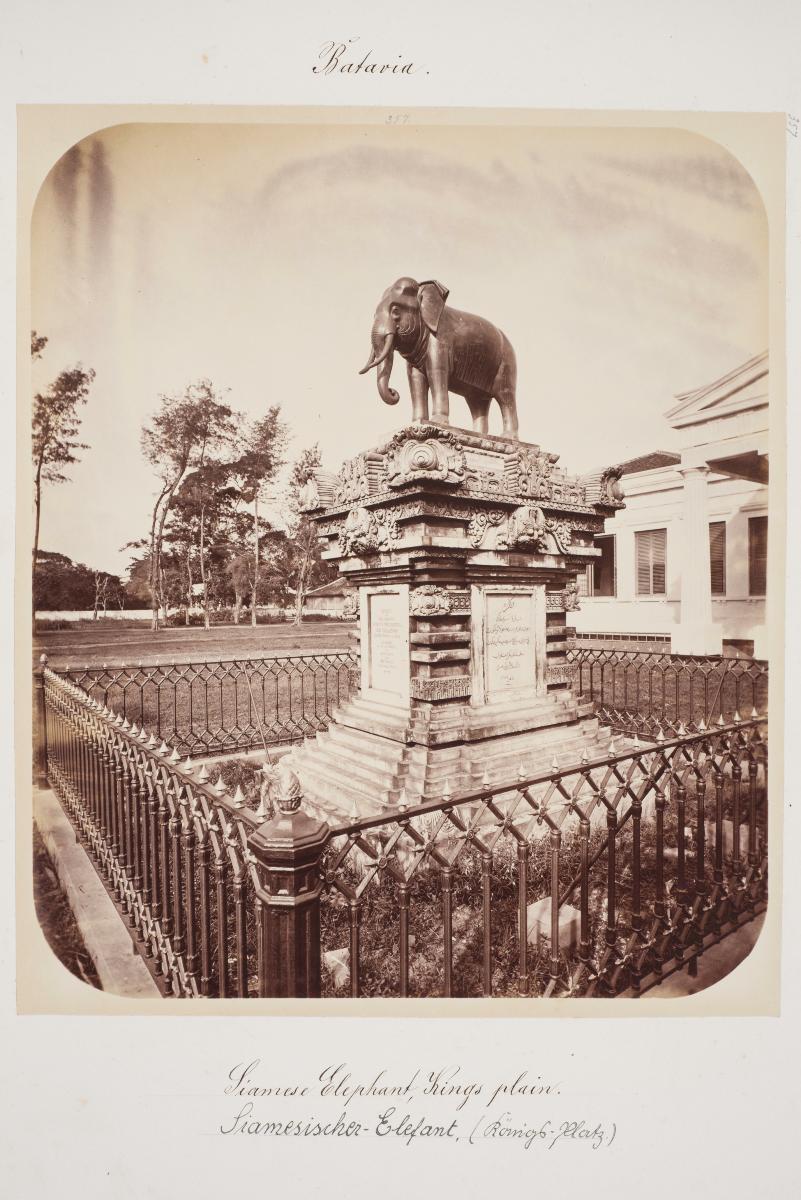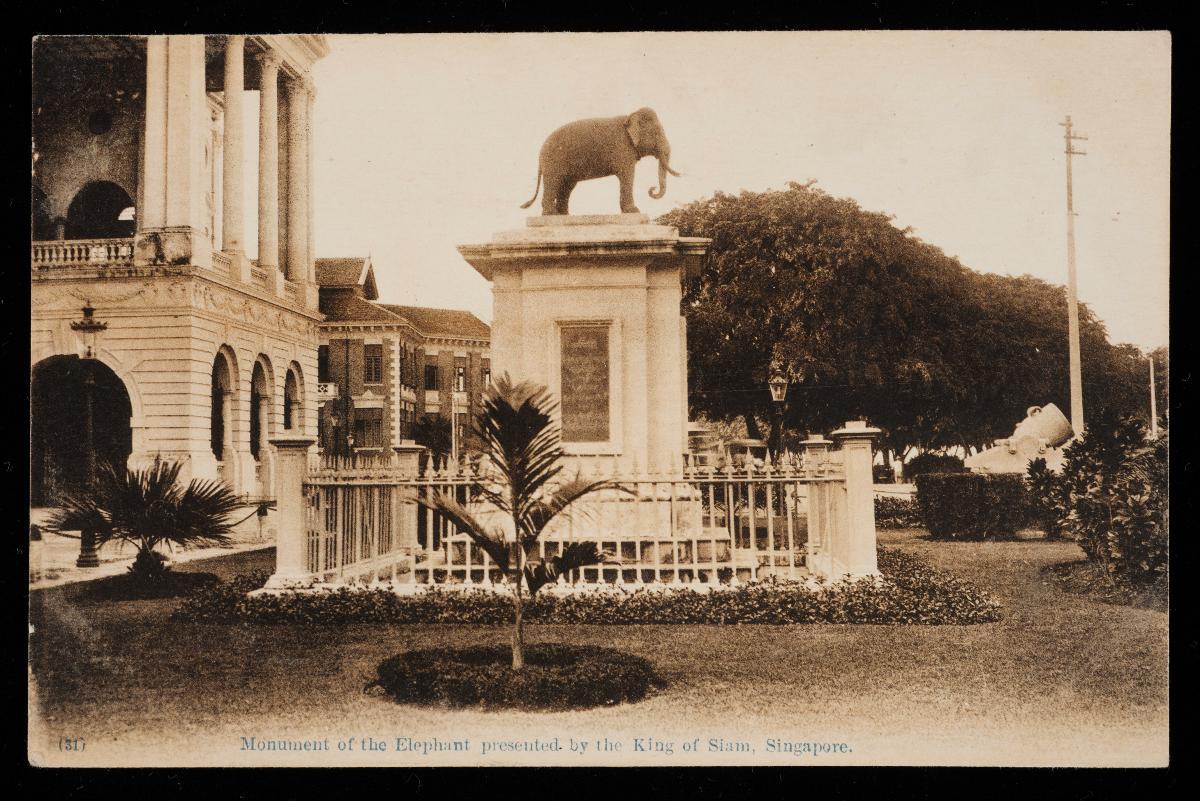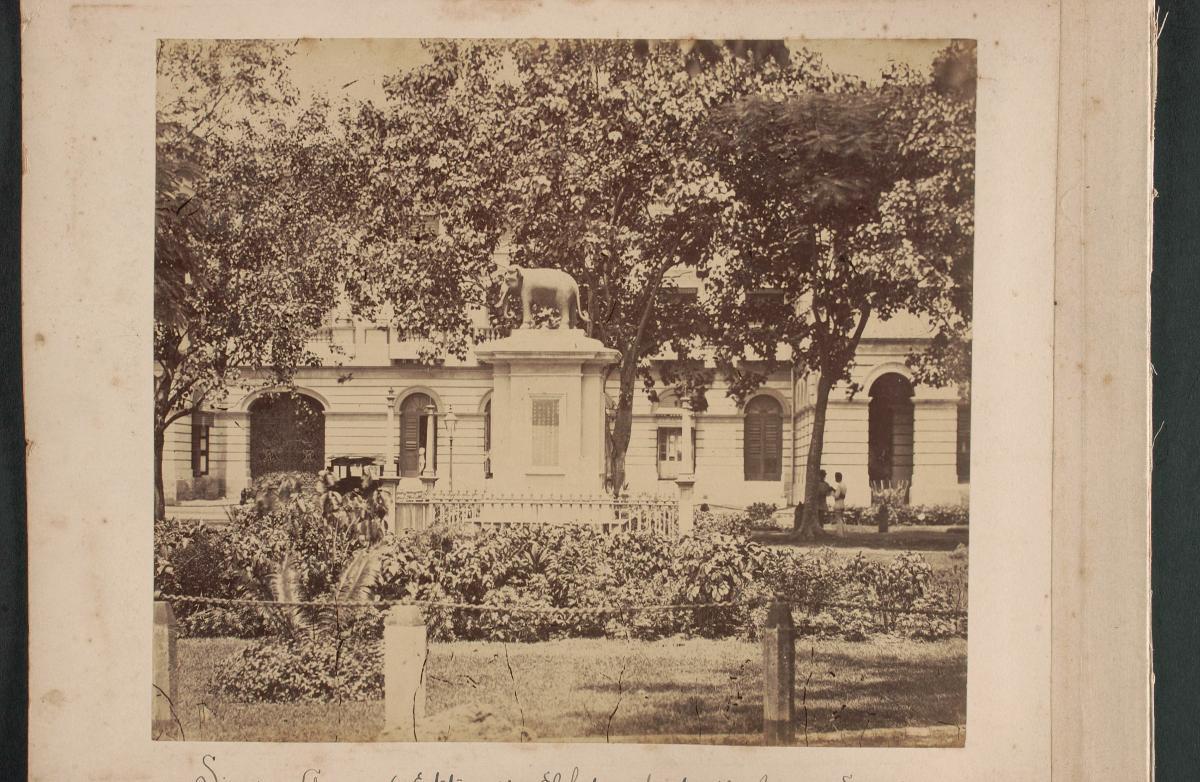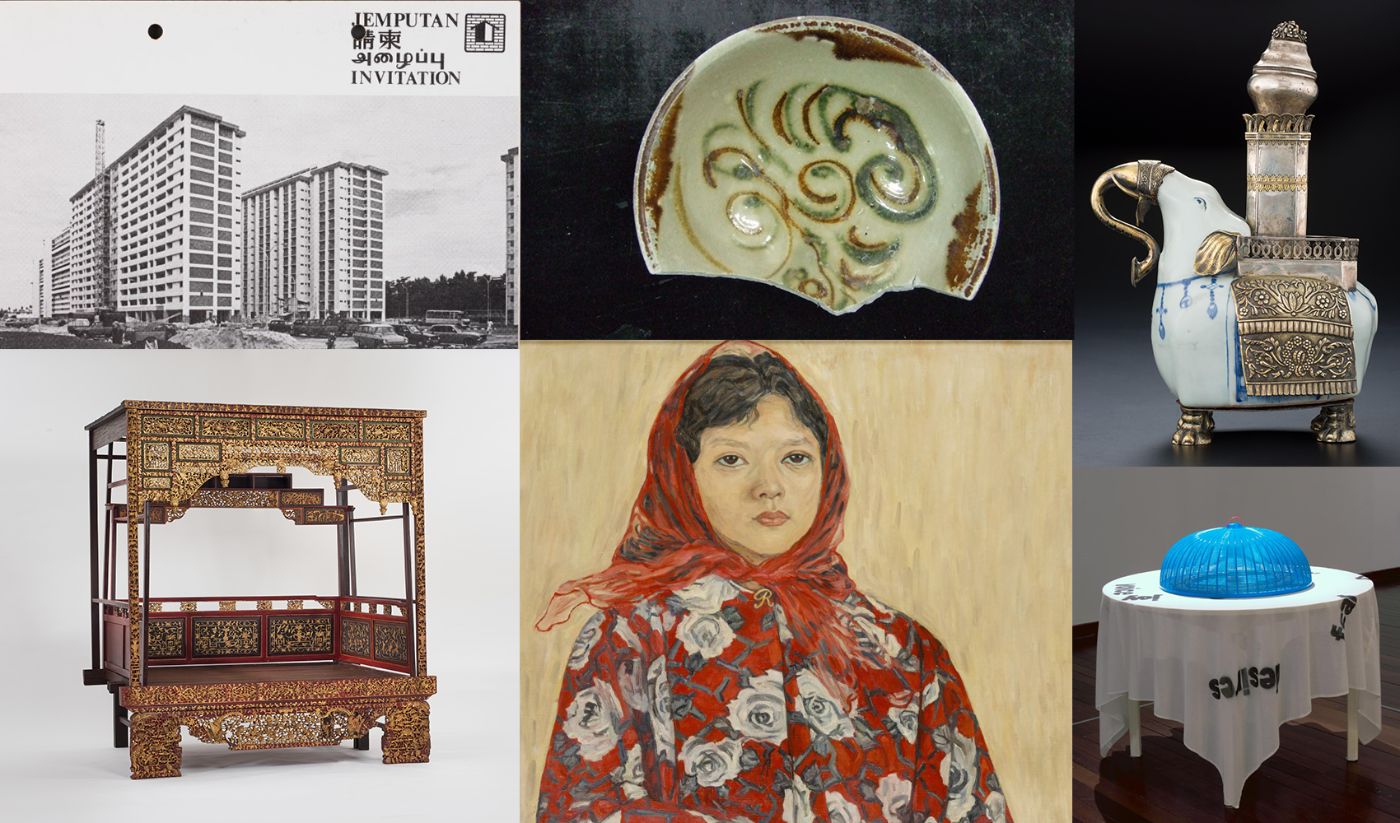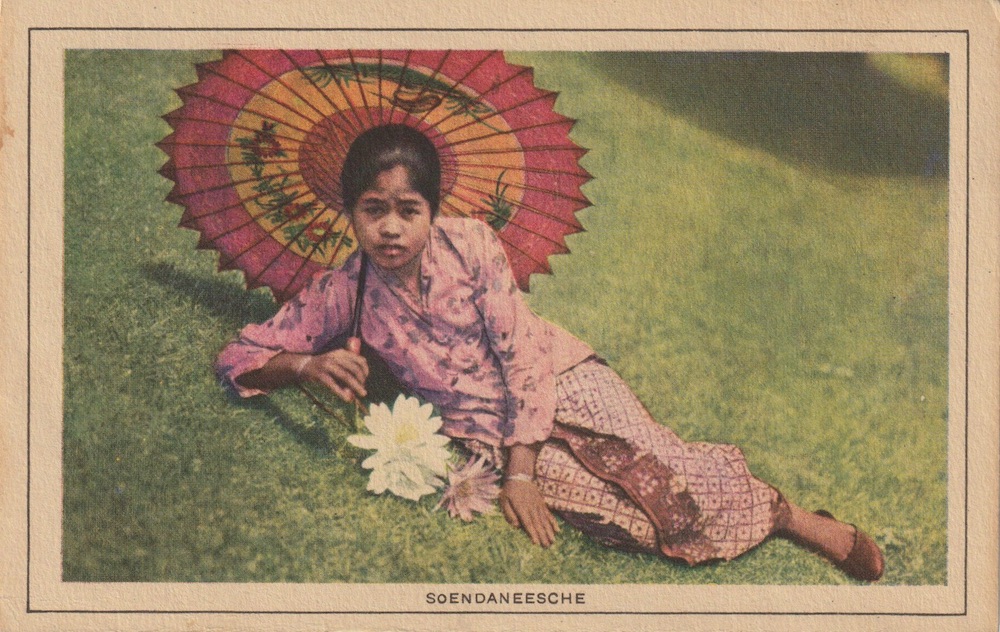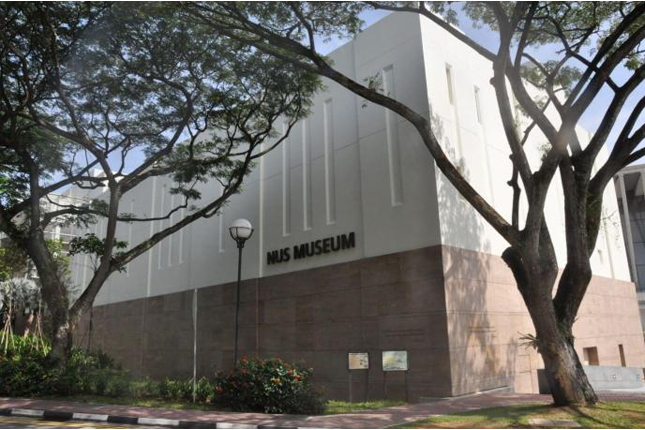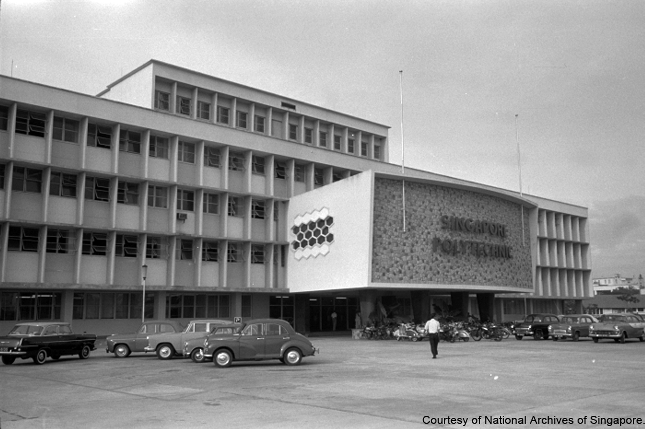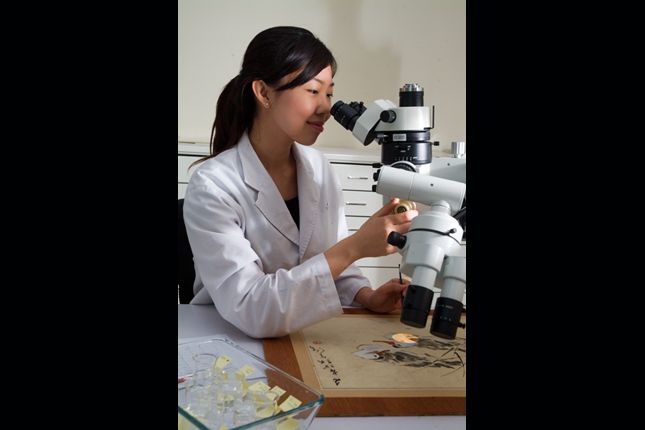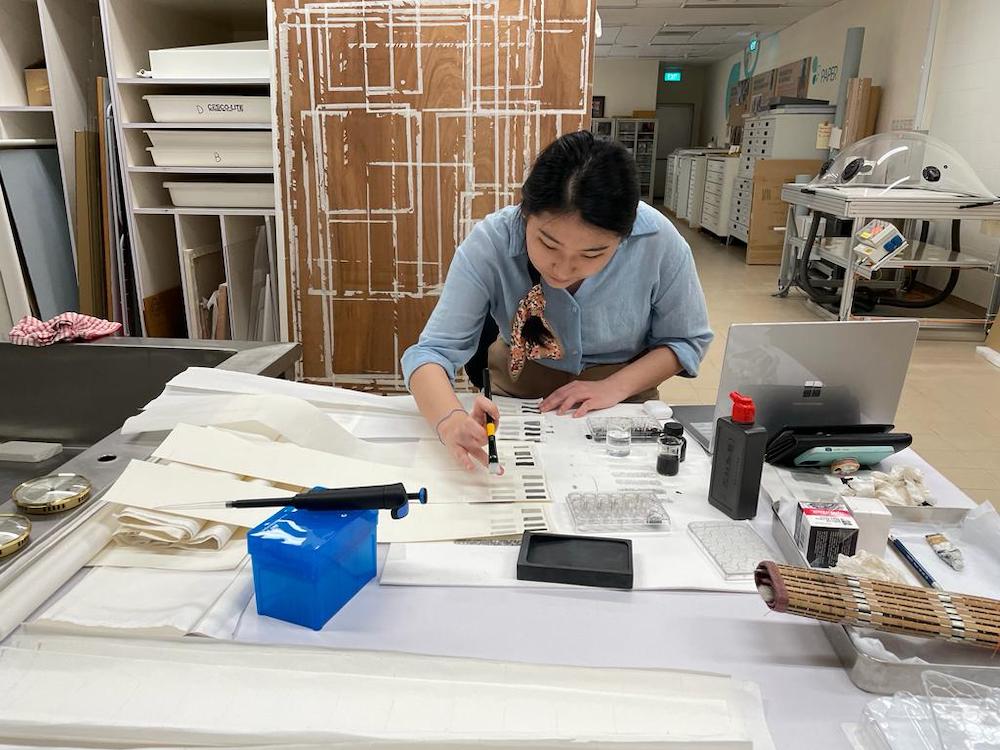Image Size: H:9.0 x W:14.0 cm
This postcard is part of a set acquired by the museum. The collection provides a glimpse into the physical and social landscape of Singapore during the 19th and 20th century which were characterised by European colonialism, the Japanese Occupation, and the post-war years. These postcards also give a glimpse into the type of architecture that was seen in Singapore in those days, as well as the range of activities, businesses, trades, and industries that the people of Singapore were involved in at that time. Some of these postcards still contain the original handwriting of the senders themselves.The Elephant Statue is a bronze monument erected on 25 June 1872 outside Town Hall, later renamed Victoria Memorial Hall in 1905 following renovation works. The statue was a gift from the Siamese monarch King Chulalongkorn (Rama V) in appreciation of the hospitality he received on his visit to Singapore in 1871. On each side of the statue’s pedestal are inscriptions in English, Siamese, Jawi and Chinese respectively proclaiming the King’s maiden trip to Singapore, which was also the first foreign land that he had visited as monarch. In 1919, the statue was moved to a new grass plot outside the then Supreme Court, now known as the Old Parliament House (or Arts House). The move was done to allow a statue of Sir Stamford Raffles, founder of modern Singapore, to be erected in its place as part of Singapore’s centenary celebrations.




